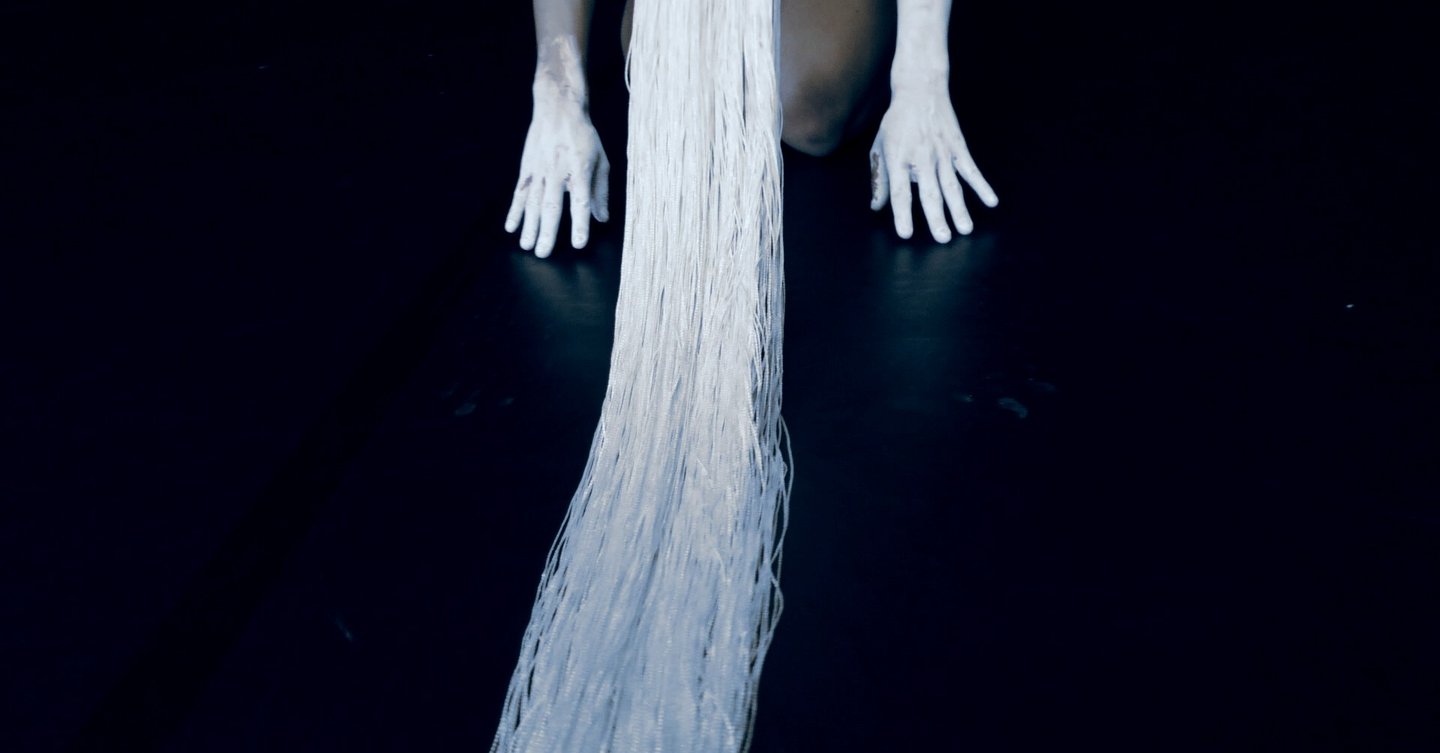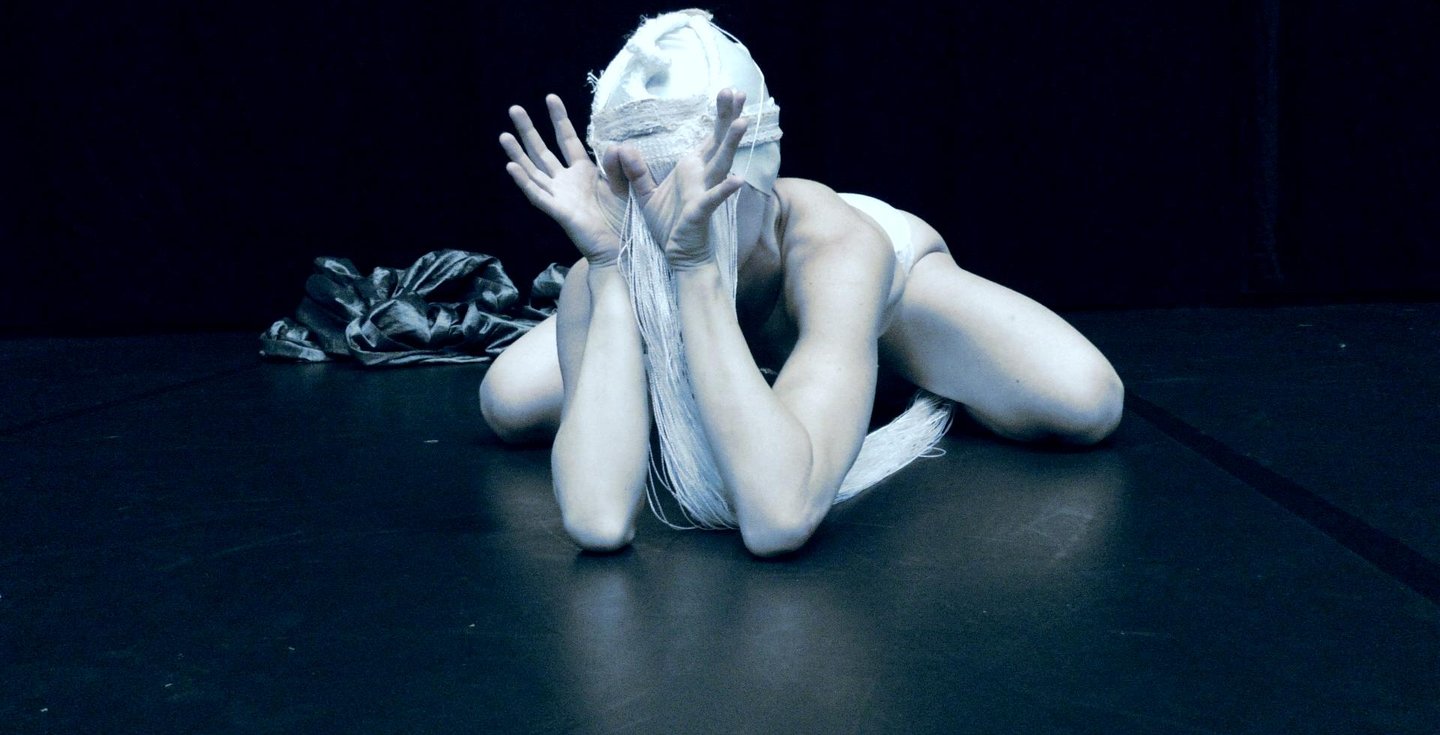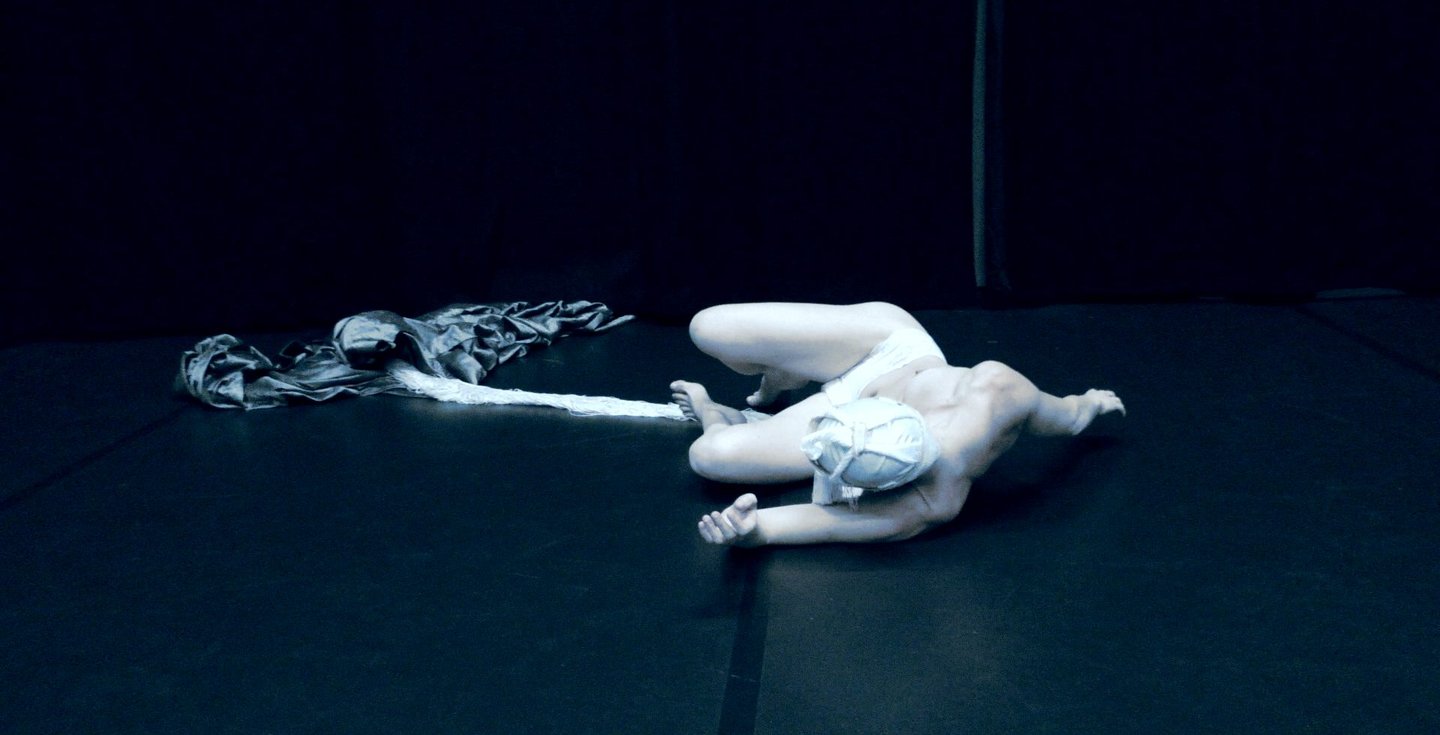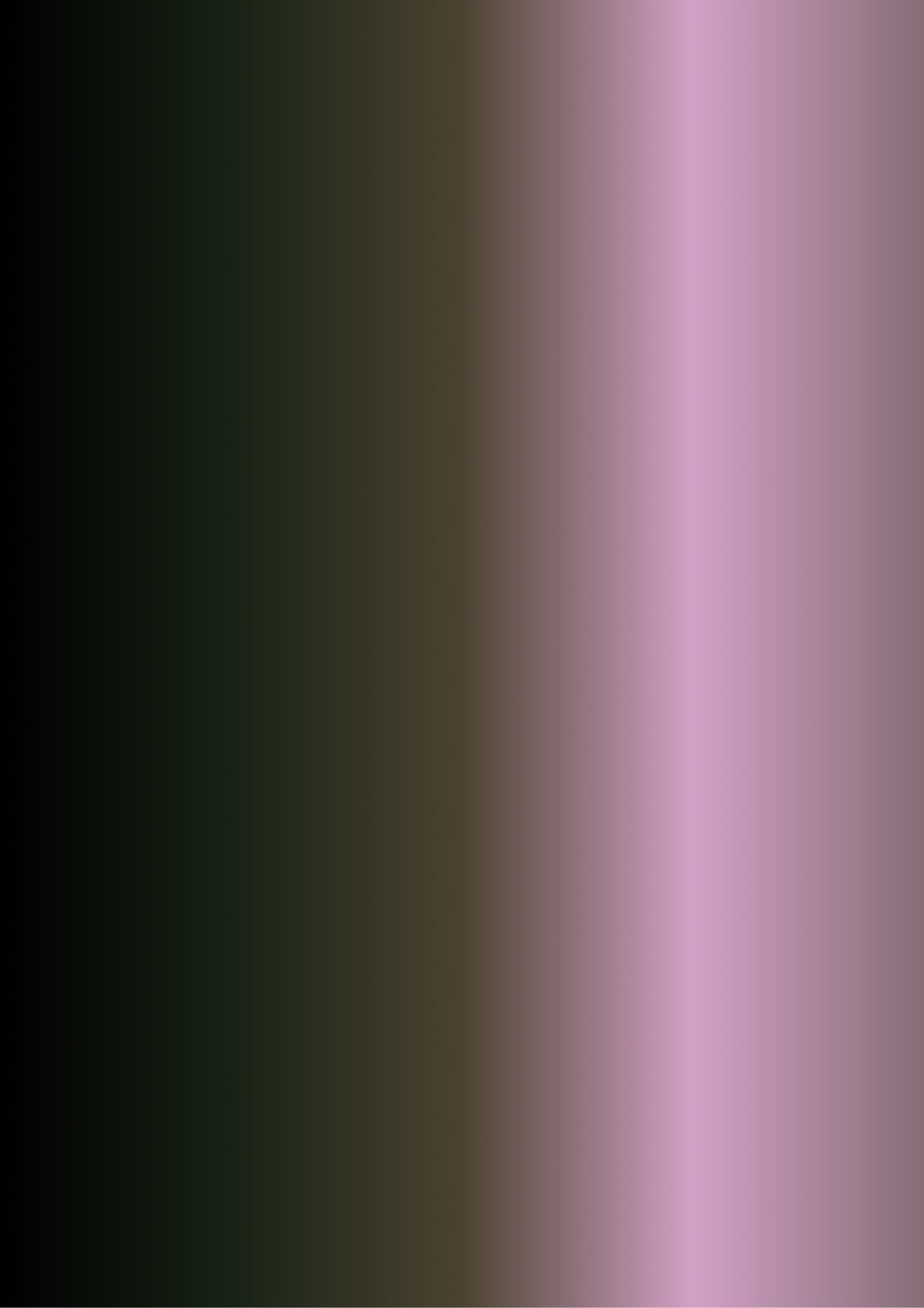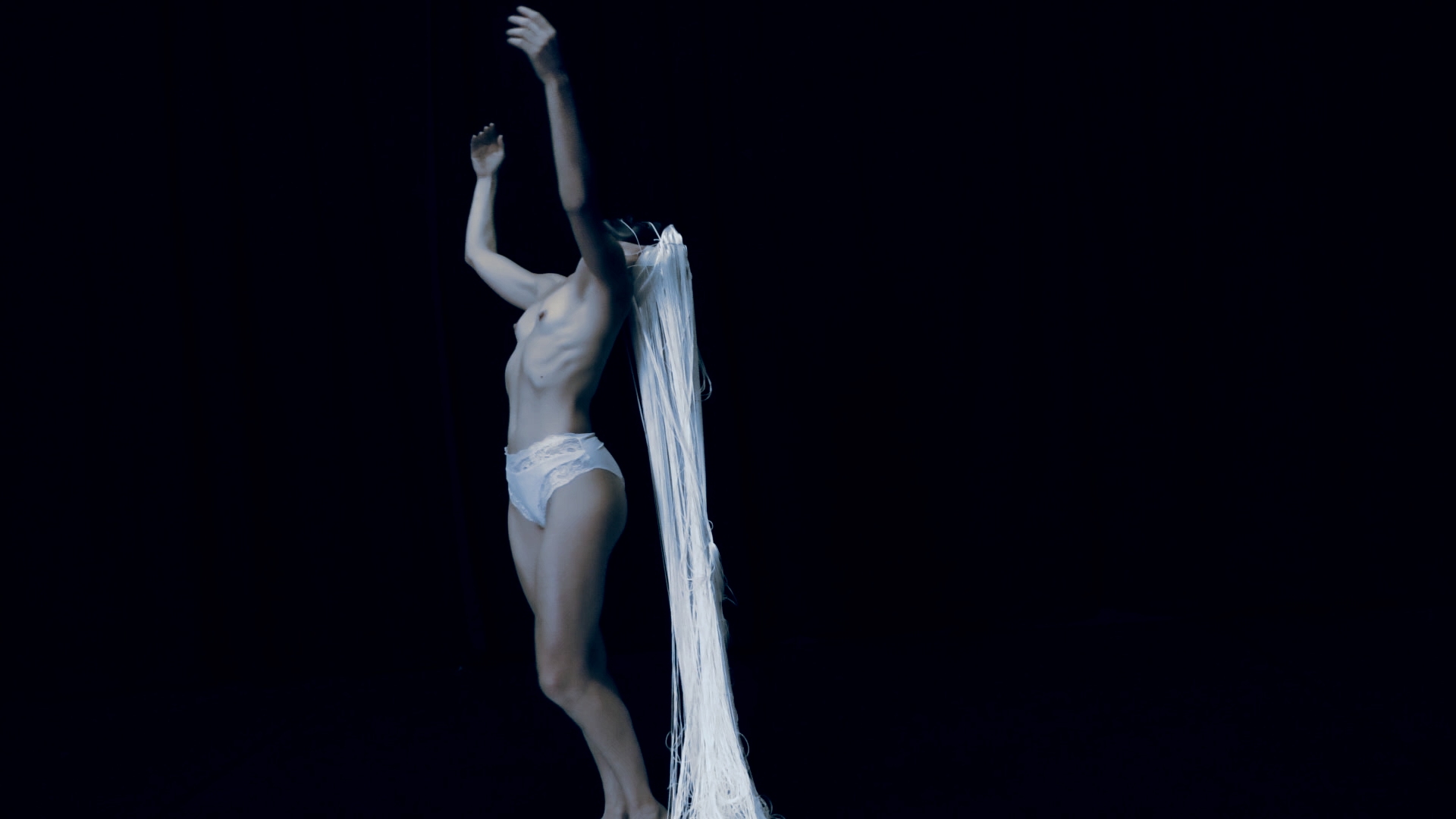
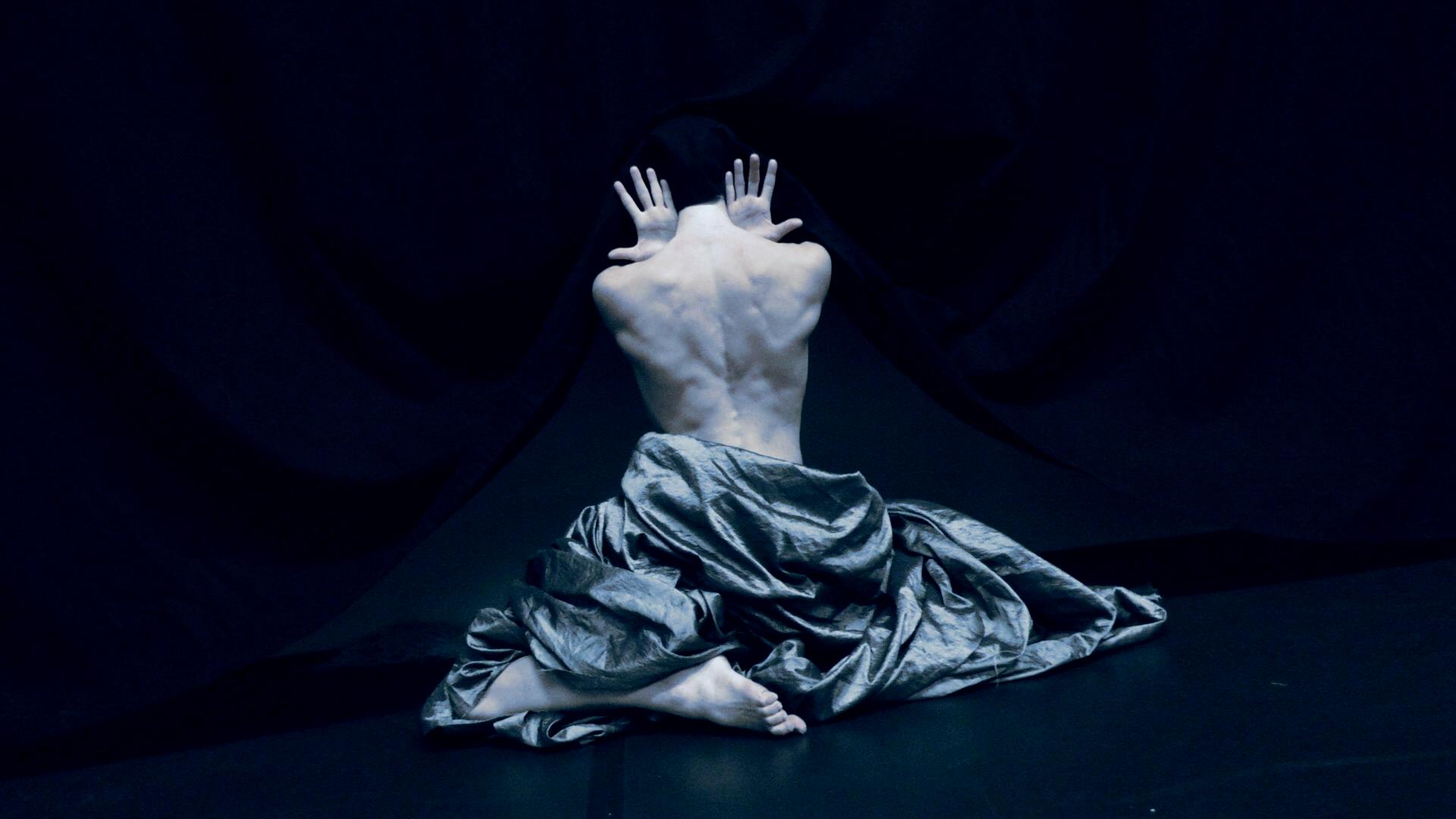
Der Schatten (2021, HD Video, 5'51")
Language: English
A poetical digital story by Tina Bikic
Credits
Filmed, Written, Narrated and Edited by Tina Bikic
Cast
In the role of narrator's double
Chiara Ameglio
Choreography
From the dance piece Ave Monstrum by Chiara Ameglio
Sound design
Diego Dioguardi, Chiara Ameglio
Costume design
Marco Bonadei, Chiara Ameglio
Lighting design
Roberta Faiolo
Music
Franz Schubert, Der Wanderer (D.489)
Producer
Mediagrammi e.V.
Space
Filmed at: Ufer Studios, Berlin
Co-funded by the Creative Europe programme of the European Union.
DER SCHATTEN
ABOUT
About
Der Schatten is a poetical digital story that explores the overcoming of the shadow through the dual perspective of a poetic narrator and a character shaped through movement. The concept of the shadow is based on the psychological theory of Carl Gustav Jung, according to which the shadow represents the repressed, unconscious part of the personality, those aspects of ourselves we do not accept or do not wish to see. Accepting the shadow does not mean identifying with it, but rather becoming more whole through awareness and integration of these unconscious contents.
Methods
In Der Schatten, I focus on the inner process of confronting the shadow. The dance performance functions not as choreography for display but as a metaphor for inner work, a shadow play in motion. Through movement, the character becomes a poetic embodiment of a psychological state. Interpreted through dance, she is not a dancer per se, but a projection or extension of the narrator.
The very structure of the film reflects the narrator’s split voice and inner conflict. This is where the shadow work begins and where the story finds its shape, through a divided voice: the voice of the character and the voice of the shadow. The narrator thus becomes voice and thought, while the character signifies movement and action. The film introduces a vocal duality, where the narrator participates in an inner dialogue between what is spoken and what is felt. These two narrative layers were constructed in the editing process, revealing an internal conversation between the desire for purity, a kind of human ideal of perfection, and the acceptance of the shadow as an integral part of the self.
Reflection
In the context of this poetic work, the shadow becomes a space for inner dialogue and transformation. In Der Schatten, movement not only illustrates narrator's voice but also it argues with it, contradicts it, and reveals it. Through movement, the character attempts what narrator's voice struggles to express: to face the shadow and overcome it. This duality became the central structure of the film. Both narrator and her double are entangled in tones, tensions, and voices, ultimately witnessing how the shadow transformed into a pure image within the space of imagination.
2.3 Non-linear narratives
2.5 Poetics of space: Constructing imaginary worlds on the screen
2.8 Tone, music and atmosphere
2.9 Rhythm: Writing, narrating, editing
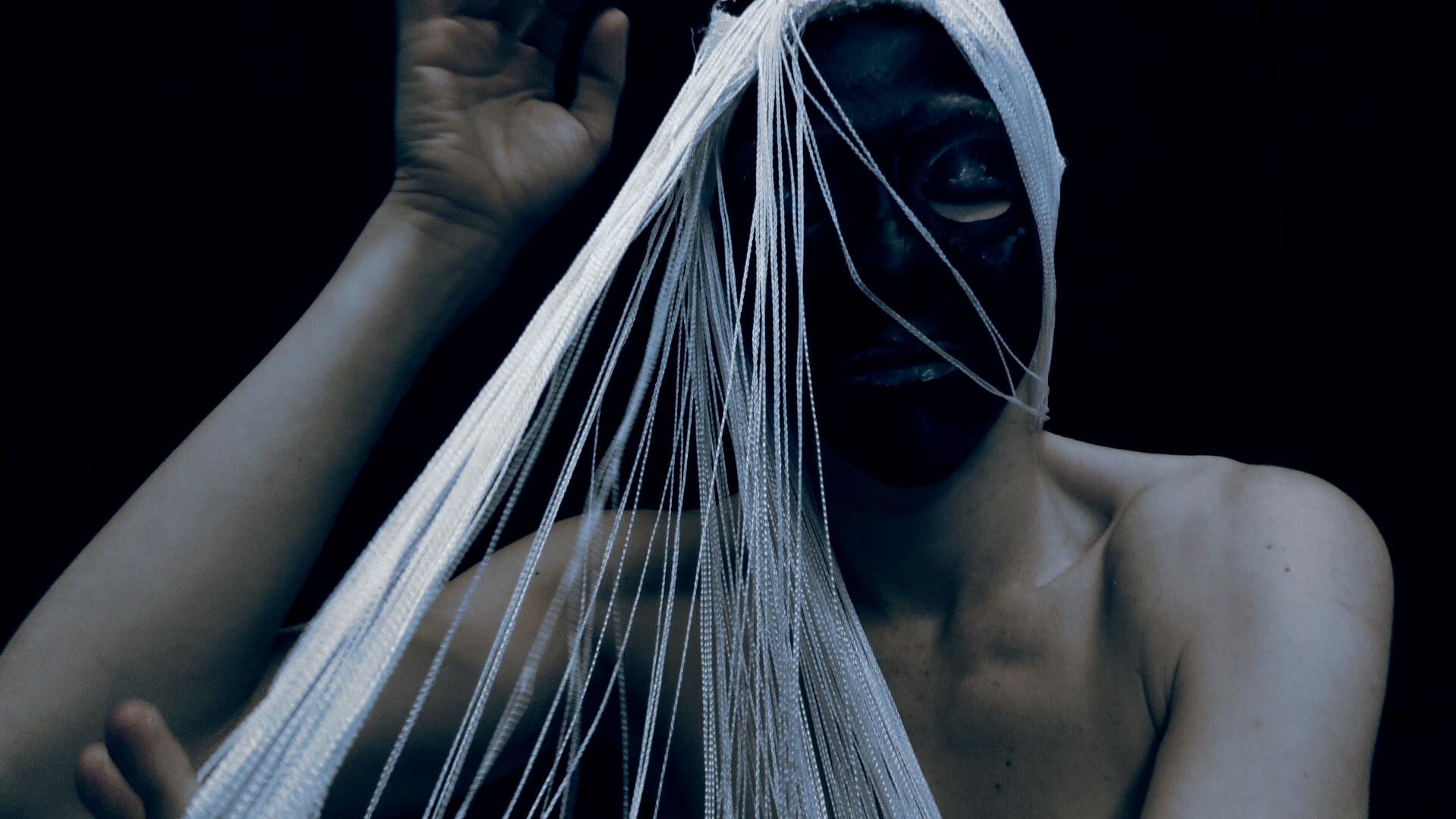
I wish to see an image of pure being and pure imagination.
-EXCERPT FROM DER SCHATTEN

I wish to see an image of pure being and pure imagination.
-EXCERPT FROM DER SCHATTEN
Der Schatten
Written and Narrated by Tina Bikic
Facing you
I felt on myself
a disturbing look
which carries within, the characteristics of infinity.


